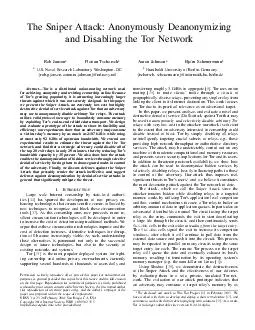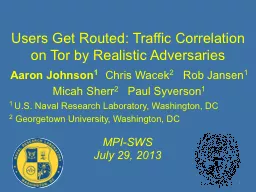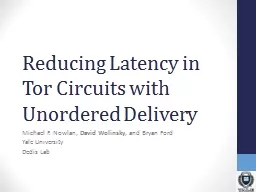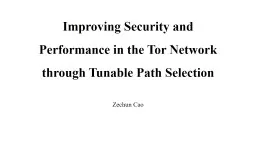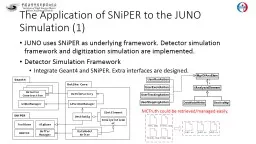PDF-The Sniper Attack Anonymously Deanonymizing and Disabling the Tor Network Rob Jansen Florian
Author : briana-ranney | Published Date : 2015-02-17
S Naval Research Laboratory Washington DC robgjansen aaronmjohnson nrlnavymil Aaron Johnson Bj orn Scheuermann Humboldt University of Berlin Germany tschorsch scheuermann
Presentation Embed Code
Download Presentation
Download Presentation The PPT/PDF document "The Sniper Attack Anonymously Deanonymiz..." is the property of its rightful owner. Permission is granted to download and print the materials on this website for personal, non-commercial use only, and to display it on your personal computer provided you do not modify the materials and that you retain all copyright notices contained in the materials. By downloading content from our website, you accept the terms of this agreement.
The Sniper Attack Anonymously Deanonymizing and Disabling the Tor Network Rob Jansen Florian: Transcript
Download Rules Of Document
"The Sniper Attack Anonymously Deanonymizing and Disabling the Tor Network Rob Jansen Florian"The content belongs to its owner. You may download and print it for personal use, without modification, and keep all copyright notices. By downloading, you agree to these terms.
Related Documents

